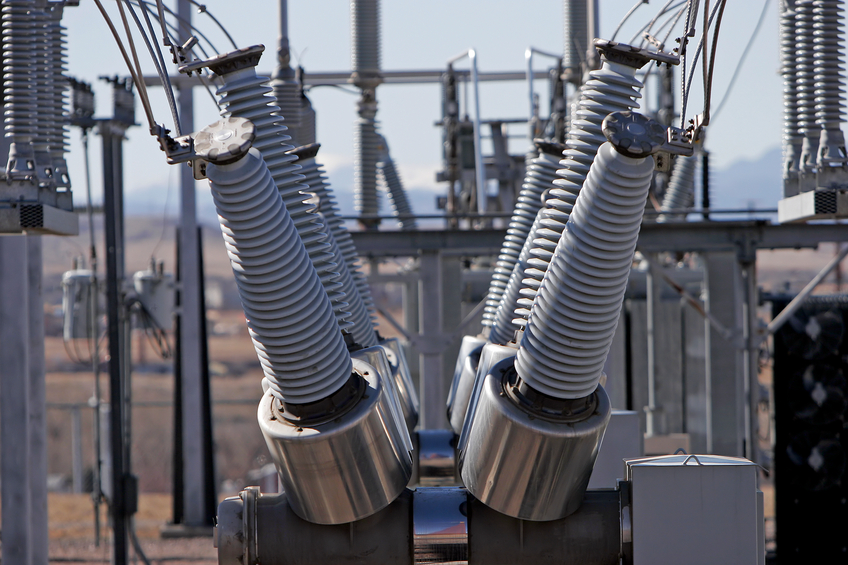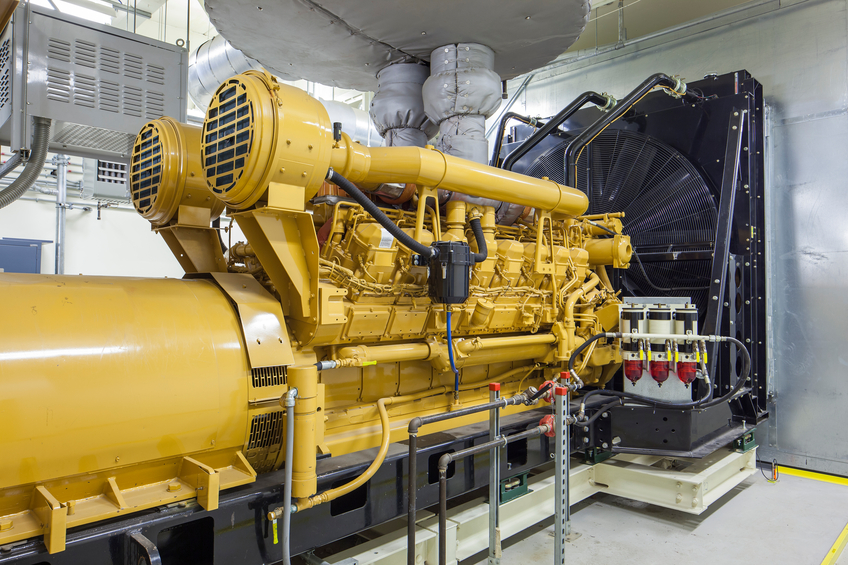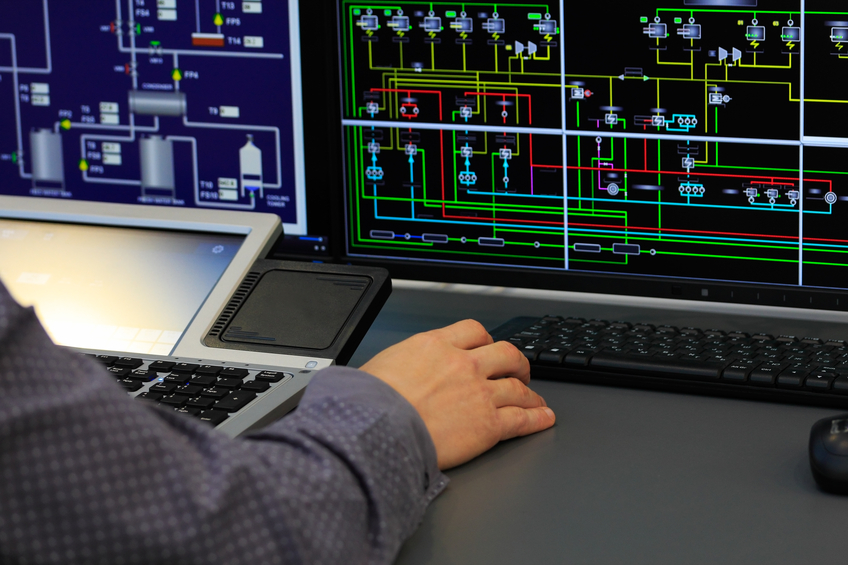Alberta Electrical 30 PDH Discount Package 2
Courses in this Package
Basic Electrical Theory (E04-001)
Basic Direct Current (DC) Theory (E03-001)
Introduction to Transformers (E05-013)
Fundamentals of Modern Electrical Substations - Part 1 (E02-010)
An Introduction to Gas Insulated Electrical Substations (E03-043)
Premium Efficiency Motor Selection and Application Guide (E07-002)
Introduction to Control and Instrumentation (E04-037)
5G Technology Fundamentals (E02-027)

This online engineering PDH course introduces basic electrical concepts. It starts by explaining the concept of the electrostatic force and the first law of electrostatics. It defines the basic electrical terminology and its corresponding units of measure. It continues to describe the methods of producing electricity. It also describes the principle of magnetism and magnetic circuits. Finally it provides a list of basic electrical symbols used to read and interpret electrical system diagrams and schematics.
This 4 PDH online course is applicable to electrical and computer engineers, design and construction personnel, technical staff and facility operators who are interested in gaining a better understanding of the theory of electricity.
This P.Eng. continuing education course is intended to provide you with the following specific knowledge and skills:
- Understanding atoms and their forces
- Distinguishing electrical components conductors, insulators and resistors
- Understanding voltage and current
- Learning the units of electrical measurements
- Identifying the methods of producing voltage
- Understanding magnetism and magnetic circuits
In this professional engineering CEU course, you need to review Module 1, "Basic Electrical Theory" of the Department of Energy Publication DOE-HDBK-1011/2-92, "Electrical Science".
Upon successful completion of the quiz, print your Certificate of Completion instantly. (Note: if you are paying by check or money order, you will be able to print it after we receive your payment.) For your convenience, we will also email it to you. Please note that you can log in to your account at any time to access and print your Certificate of Completion.

This online engineering PDH course introduces the basic concepts of direct current (DC). It starts by describing the various types of DC sources. It explains the relevant DC circuit terminology. It demonstrates a series of basic DC circuit calculations by providing pertinent examples. It introduces conventional and electron flow and voltage polarity as well as defines Kirchhoff's Laws. Finally it discusses DC circuit analysis and faults.
This 3 PDH online course is applicable to electrical and computer engineers, design and construction personnel, technical staff and facility operators who are interested in gaining a better understanding of the theory of direct current.
This P.Eng. continuing education course is intended to provide you with the following specific knowledge and skills:
- Identifying DC sources
- Familiarizing with DC circuit terminology
- Performing DC circuit calculations
- Understanding voltage polarity and current direction
- Knowing Kirchhoff's laws
- Analyzing DC circuits and identifying circuit faults
In this professional engineering CEU course, you need to review Module 2, "Basic DC Theory" of the Department of Energy Publication DOE-HDBK-1011/2-92, "Electrical Science".
Upon successful completion of the quiz, print your Certificate of Completion instantly. (Note: if you are paying by check or money order, you will be able to print it after we receive your payment.) For your convenience, we will also email it to you. Please note that you can log in to your account at any time to access and print your Certificate of Completion.

This online engineering PDH course describes the basic concept, function, types, and the different components of electrical transformers.
A transformer is an electrical equipment that transfers energy from one circuit to another by electromagnetic induction. They are often used to convert between high and low voltages (step-up or step down). Transformers and their components vary depending on the application and are available in several different configurations.
This 5 PDH online course is applicable to electrical and mechanical engineers, maintenance personnel and other technical staff who are interested in gaining a better understanding of transformers.
This P.Eng. continuing education course is intended to provide you with the following specific knowledge and skills:
- Understanding the function of transformers and their physical characteristics
- Familiarizing with the different components of transformers
- Learning how to identify a transformer as step-up or step-down and state the current ratio of a transformer when given the turns ratio
- Learning the mathematical relationship between the power in the primary and the power in the secondary of a transformer
- Understanding the basics of the different types of transformers
Upon successful completion of the quiz, print your Certificate of Completion instantly. (Note: if you are paying by check or money order, you will be able to print it after we receive your payment.) For your convenience, we will also email it to you. Please note that you can log in to your account at any time to access and print your Certificate of Completion.

This online engineering PDH course series presents an overview of modern electrical substations, emphasizing their importance for reliable and effective operation of power systems; describing all major, auxiliary and control equipment; listing typical engineering issues associated with substation design and engineering; and providing recommendations for addressing these issues. The entire course series consists of three parts:
- Part 1: Mission of Electrical Substations and their Main Components
- Part 2: Electrical Substation Auxiliary and Control Systems
- Part 3: Electrical Substation Engineering Aspects
Part 1 of this course series is presented herein. This course starts with a discussion about the main goals that every utility company has, followed by a description of a typical power system structure, justification for voltage transformation and mission of substations. The next section of this course covers all main aspects of the substations including their mission, components, types and arrangement. All explanations are supported by numerous photos showing all substation major equipment and their installation options.
This 2 PDH online course is intended for electrical and civil engineers and designers, construction professionals, as well as utility company management and field personnel looking to expand their knowledge and experience in modern electrical substations.
This P.Eng. continuing education course is intended to provide you with the following specific knowledge and skills:
- Understanding of modern power systems arrangement, including the structure of Transmission and Distribution (T&D) system
- Understanding the substation mission and its place in the overall T&D structure
- Familiarizing with the substation main components
In addition, after completing this course, you'll be able to:
- List typical power system voltages
- Describe the reasons for voltage transformation
- Explain the meaning of sectionalization of power systems
- Describe all major substation components including:
- Power transformers
- Switching equipment
- Substation bus system
- Instrument transformers
- Explain when to use each type of switching equipment
- List all advantages and disadvantages of each type of substation bus system, including:
- Open air rigid bus
- Strain bus
- Gas insulated bus
- Cable bus
- Explain what current and potential transformers are used for and what their standard secondary values are
- Explain why overvoltage protection of substation elements is needed and what major means of this protection are
- List substation equipment installation options
In this professional engineering CEU course, you need to review Part 1 of Fundamentals of Modern Electrical Substations titled, “Mission of Electrical Substations and their Main Components”.
Upon successful completion of the quiz, print your Certificate of Completion instantly. (Note: if you are paying by check or money order, you will be able to print it after we receive your payment.) For your convenience, we will also email it to you. Please note that you can log in to your account at any time to access and print your Certificate of Completion.

This online engineering course provides a basic overview of Gas Insulated Substations (GIS) and GIS technology.
A GIS is a high voltage substation in which the major conducting structures are contained within a sealed environment with a dielectric gas known as sulfur hexafluoride gas (SF6) as the insulating medium. In comparison, a conventional (AIS) or Air-Insulated Substation, uses atmospheric air as the dielectric gas medium, as these types of substations are almost always located at outdoor locations.
This 3 PDH online course is intended for electrical engineers and all other technical personnel working within the electric utility industry, who are interested in gaining a better understating of GIS systems and GIS technology.
This P.Eng. continuing education course is intended to provide you with the following specific knowledge and skills:
- Familiarizing with the basic concept of a GIS System
- Learning about Hybrid GIS Substations
- Understanding the advantages and disadvantages of GIS Systems
- Learning about SF6 gas, leak detection, and gas monitoring systems
- Familiarization with international standards relating to GIS
- Understanding the basic economic considerations of GIS vs AIS
- Learning about contaminants and oxidation in the gas
- Familiarizing with enclosure modules for a GIS System
- Learning about conductors in a GIS System
- Familiarizing with the circuit breakers and transformers used in GIS Systems
- Learning about switching and arrester devices used in GIS Systems
- Learning about the connections in GIS Systems
- Familiarizing with the control system of a GIS
- Familiarizing with testing, installation, and operational procedures for a GIS
Upon successful completion of the quiz, print your Certificate of Completion instantly. (Note: if you are paying by check or money order, you will be able to print it after we receive your payment.) For your convenience, we will also email it to you. Please note that you can log in to your account at any time to access and print your Certificate of Completion.

This online engineering PDH course provides guidance in new motor purchase decisions, and helps in identifying the energy and cost savings for motors that should be replaced with premium efficiency units.
The National Electrical Manufacturers Association (NEMA) adopted a NEMA Premium® efficiency motor standard in August of 2001. A motor can be marketed as a NEMA Premium motor if it meets or exceeds a set of minimum full-load efficiency levels.
These premium efficiency motor standards cover the 1 horsepower (hp) to 500 hp three-phase low-voltage NEMA Design A and B general, special, and definite purpose induction motors that are in widespread use in U.S. industrial facilities. The energy savings from replacing in-service standard and energy efficient motors with premium efficiency motor models can be substantial.
This 7 PDH online course is applicable to electrical and mechanical engineers and professionals who are interested in learning more about the performance, properties, selection and applications of premium efficiency motors.
This PE continuing education course is intended to provide you with the following specific knowledge and skills:
- Familiarizing with the in-service motor population and motor uses in the industrial sector
- Understanding the evolution of voluntary and mandatory motor efficiency standards
- Learning how to evaluate motor efficiency opportunities, address application considerations, and determine cost-effectiveness
- Gaining an overview of currently available and emerging advanced “Super Premium” efficiency motor technologies
- Understanding the preventive and predictive maintenance activities necessary to keep premium efficiency motors operating at peak efficiency
Upon successful completion of the quiz, print your Certificate of Completion instantly. (Note: if you are paying by check or money order, you will be able to print it after we receive your payment.) For your convenience, we will also email it to you. Please note that you can log in to your account at any time to access and print your Certificate of Completion.

This engineering online PDH course will establish, through slides and discussions, the basic principles of control systems, including systems such as loops control, elements, types of controls and control circuit diagrams. Additionally, it will present diagrams of basic instruments to illustrate how the instrument functions.
The Introduction to Instrumentation and Controls presents the elements that make a control system and the most common instrumentation used in industry. It describes basics of control loops, configuration, including control loop and its elements. It also describes instrumentation for pressure, flow, level and temperature, explaining their physical principles, and common applications. Introduction to motor controls is included in the last section of the course. Basic motor control schematics for simple motor starters are explained. Finally, basic description of a of modern motor control center is presented.
The 4 PDH online course is intended for electrical, chemical, and mechanical engineers, as well as project managers in industry, who are interested either in learning more about control systems and instrumentation or wish to refresh basic control and instrumentation concepts.
This P.Eng. continuing education course is intended to provide you with the following specific knowledge and skills:
- Identifying system elements and components
- Understanding the basics of controls such as loop and open controls and their respective elements
- Learning about the methods and principles of instrumentations
- Familiarizing with the Basics of motor control elements
In this professional engineering CEU course, you need to review the course document titled, "Introduction of Control and Instrumentation" by Manuel Gooding.
Once you complete your course review, you need to take a multiple-choice quiz consisting of twenty five (25) questions to earn 4 PDH credits. The quiz will be based on the entire document.
Upon successful completion of the quiz, print your Certificate of Completion instantly. (Note: if you are paying by check or money order, you will be able to print it after we receive your payment.) For your convenience, we will also email it to you. Please note that you can log in to your account at any time to access and print your Certificate of Completion.

This online engineering PDH course will explore the fundamentals of several technological advancements and improvements that enable the deployment of 5G.
5G has arrived! In this exciting launch into the next decade of cellular technology, 5G is revolutionizing the modern way of life. Whether you are a wireless industry expert or data consumer, 5G technology devices are everywhere and you may even own one as we speak. Today’s advancements in 5G leverages many improvements on bandwidth efficiency, power efficiency (battery life), network capacity, latency rates, reduction of multipath effects, and other technological advances that ultimately enable mobile users as well as the Internet of Things (IoT) to be ubiquitously connected to the internet. As the world becomes increasingly data hungry Cisco Systems estimates global data usage to be in the billions of gigabytes every month! Have you ever considered what makes this possible? Or have you pondered to yourself where all of the wireless bandwidth could possibly come from? Join us in exploring the technologies that make the deployment of 5G possible.
This 2 PDH online course is applicable to electrical, civil, and mechanical engineers, as well as project managers in construction, and other professionals who are interested to grasp a fundamental understanding of 5G technologies that can help us not only improve quality of life, but also usher us into the endless possibilities that this generation of 5G can bring.
This P.Eng. continuing education course is intended to provide you with the following specific knowledge and skills:
- Familiarizing with a brief overview of the evolution of wireless technology
- Understanding challenges to overcome in order to achieve 5G standards
- Understanding 5G performance benchmarks (“5G Triangle”)
- Learning examples of potential 5G use cases
- Learning how to achieve 5G performance by addressing 2 important questions:
- Where can we get more spectrum?
- How can we better utilize existing spectrum?
- Learning Millimeter wave technology for expanding spectrum capacity
- Network congestion in existing spectrums
- Propagation vulnerabilities
- Attenuation trade-offs
- Antenna size advantages
- Learning MIMO technology for increasing spectral efficiency
- Overcoming small-scale propagation effects (multipath fading)
- Antenna diversity for multiplying radio signals
- OFDM modulation scheme basics
- MIMO modes
Once you complete your course review, you need to take a multiple-choice quiz consisting of ten (10) questions to earn 2 PDH credits. The quiz will be based on the entire document.
Upon successful completion of the quiz, print your Certificate of Completion instantly. (Note: if you are paying by check or money order, you will be able to print it after we receive your payment.) For your convenience, we will also email it to you. Please note that you can log in to your account at any time to access and print your Certificate of Completion.